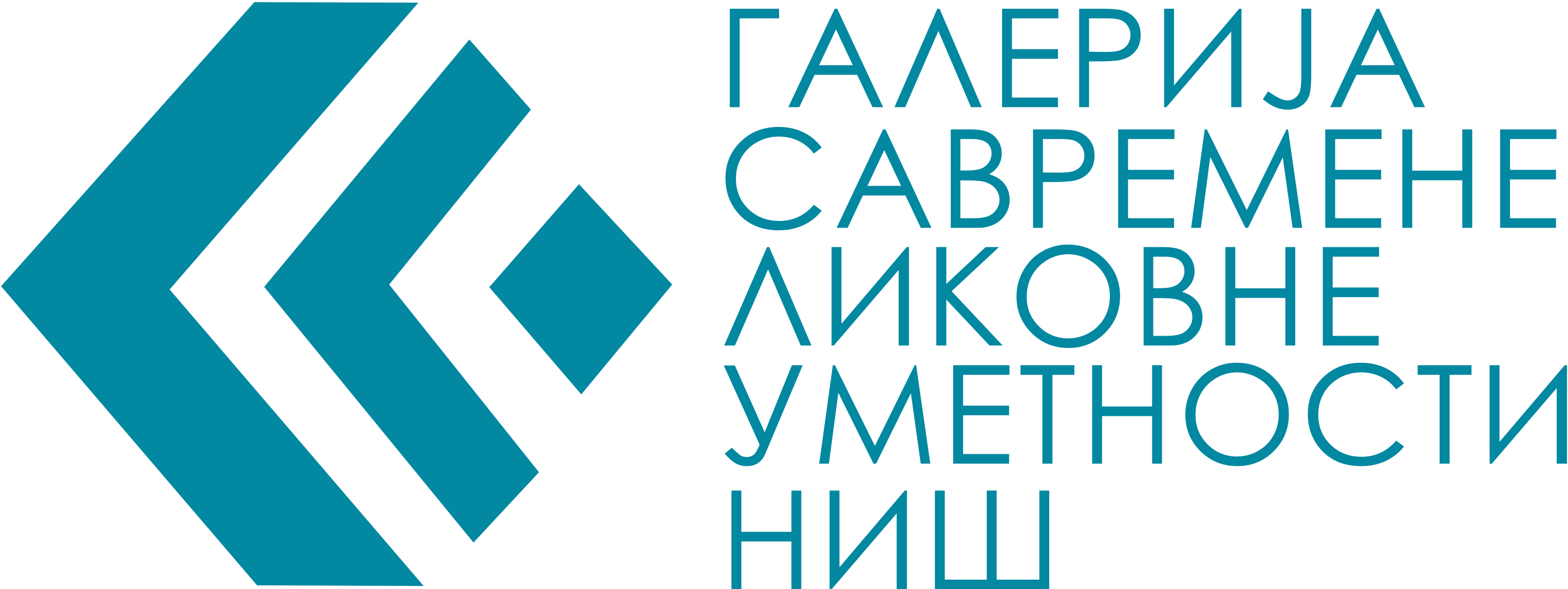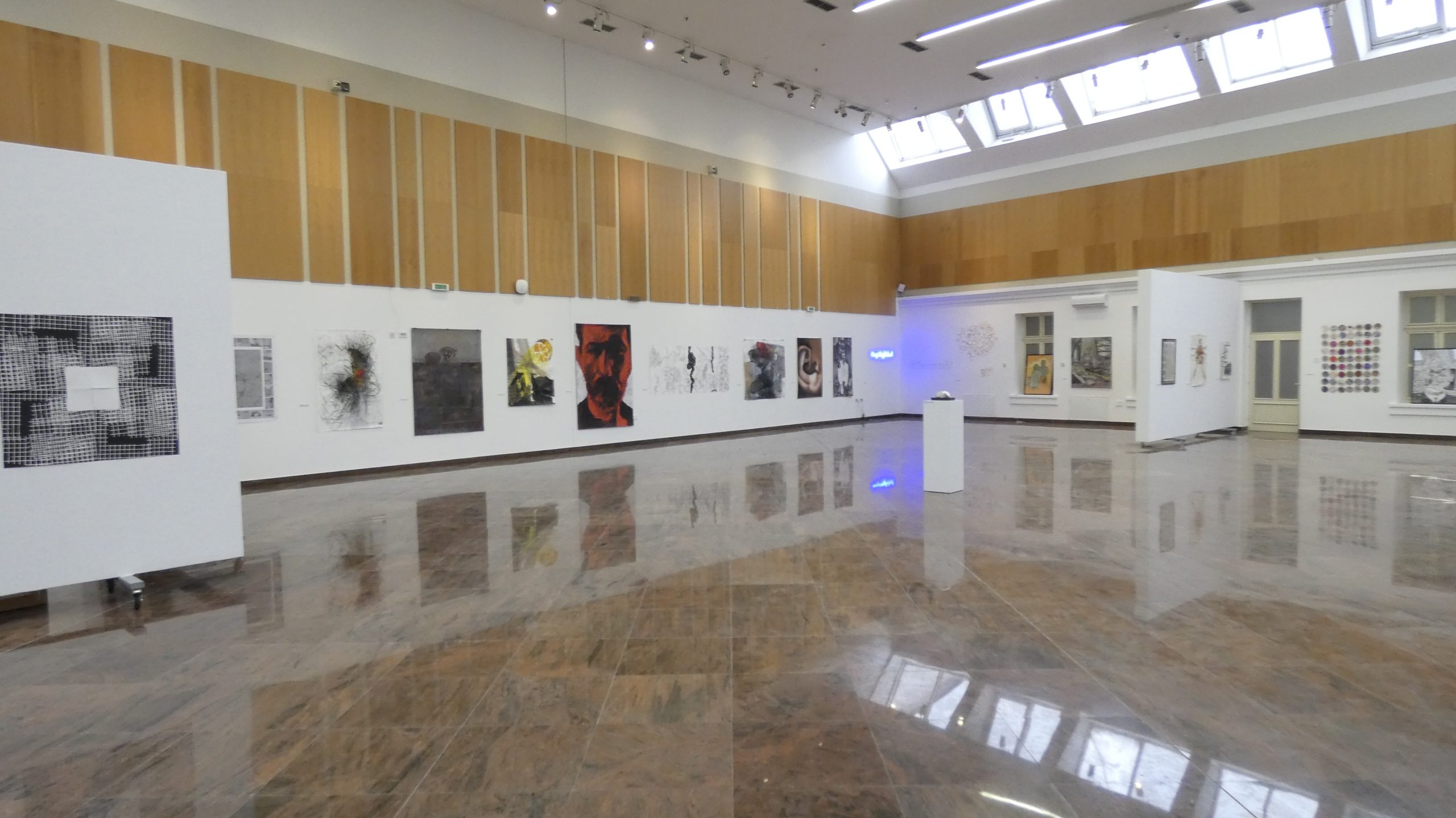STRUCTURES – DRAWING FROM NISH 2024 STRUCTURES – DRAWING FROM NISH 2024
December 17, 2024 – February 15, 2025
The first exhibition dedicated to drawing as an independent art discipline was organized back in 1991 in the Pavilion of the Niš Fortress and for the next six years it gathered only Niš artists. At the beginning of the new millennium, after a short break, this exhibition grew into a large, significant annual event with a competitive character with a given theme, to which artists from all over Serbia applied. As it gained popularity and an increasing response, each subsequent one was juried.
A total of 94 authors from Niš and other cities in Serbia participated in this year’s thirtieth edition, and according to the jury’s selection, the exhibition will feature works by 51 authors.
The theme of the Niš Drawing is: STRUCTURES (lat-struete – to arrange, to create)
The figurative approach in fine art has been understood and built from nameless and abstract elements since ancient times. Many contemporary artists have built their aesthetics on the structure of a painting, sculpture, graphic sheet, contemporary drawing or even an installation. We can view structure in the true sense but also comprehensively. Life and social structures, structural orientations, biological structures, sexual structures, political structures, structures of the written word, structures of natural phenomena, structures in music, art, painting, can be terms for visualizing this at first glance simple expression.
The broad understanding of Structure has inspired a large number of Niš Drawing artists, so the works created on the aforementioned theme have been viewed from multiple angles. Most of them stuck to their already recognizable and authentic artistic, intellectual and visual identity, so the exhibition represented a multitude of different techniques and styles. Certainly, the diversity in the understanding of drawing requires a complex reading, drawing attention to the evolution of drawing as a media in the contemporary world of new technologies, which is why, in addition to classic drawing (on charcoal paper or pencil), digital drawing is also represented. While for some artists, the drawing is completely materialized, building a structure of form, color, line, surface. On this occasion, the artists, with their thematic determinants, draw the public’s attention to modern man surrounded by globalization, increasing stratification, wars, drastic differences in material status and the struggle for existence. We must mention the influence of social networks on the everyday life of the younger population. The layering of digital media as well as their diverse content can be of great benefit but also harm to society in general. All of the above also affects the contemporary artist, providing him with greater perspectives and information. Therefore, with the abundance of technical possibilities and the creativity of our artists, the exhibition represents a true review of drawing disciplines, which can be divided into several artistic units.
The tradition of classical drawing made in the technique of charcoal, watercolor, graphite pencil and combined techniques in figurative representation is noticeable in Milica Antonijević, Jelena Aranđelović, Miljana Dimitrijević, Ana Cvejić, Anđela Micić, Bojan Otašević, Jovan Spasić, Ivan Perak, Vladimir Randjelović, Sofija Milovanović. With a multi-layered figurative composition performed in pencil and clear ink, Jelena Trajković Popivoda puts drawing on a higher level so that drawing, like life, becomes a game. Expression through nature and natural phenomena is present in the drawings of Biljana Vuković, Jelena Malikov, Slobodan Radojković, Đura Radonjić, Daniela Fulgosi, Tatjana Marticki, while, for example, Jelena Šalinić Terzić, with her monumental depiction of a rocky scene in a relief layered spread of color and line, emphasizes the dominance of nature over man.
The games of geometric shapes and forms, intertwined lines, and circles are dealt with by Vesna Zarev, Stevan Kitić, Danilo Paunović, Jasna Gulan Ruzić, Vladica Ristić, Radovan Stanojev, Milica Rajković, while Dejan Ristić, Tijana Miljković, Marta Pejčić, and Nataša Stanojev use the new possibilities of modern computer drawing and photography techniques.
Nikola Milanov, Anđela Mujčić, Teodora Nikolić, Nikola Marković, Ivana Savić Dragana Kuprešanin, each in their own individual expression, deal with the emotions of modern man caused by personal lived memories or global problems and society.
We observe segments from nature transposed through photography with the rusticity of natural stone in Boris Kandolf. Bratislav Bašić emphasizes the connection with the past of centuries-old culture, art and religion through the remains of our cultural heritage. Many other works realized in abstract representation through drawing, collage, embroidery on paper, canvas generate a broader perspective of understanding structure (Jovana Đorđević, Anica Radošević, Teodora Nikolić, Dominika Morariu). Stylized ornaments from folk handicrafts such as carpets, Nikola Radosavljević, by perforating white paper, wants to point out the equality of everyone in the world and call for truce and harmony. The drawing woven into the stone sculpture of Julija Dubavac takes us back to the ancient past of our ancestors and the drawings in the caves of Altamira, emphasizing the layered intellectual structure of man, that same modern being, the only evolutionary of all mammals on the planet.
Tamara Pešić renames the drawing a warning sign and an anxiety zone of modern society.
The Gallery of Contemporary Fine Arts Niš has been nurturing an exhibition named after its venue for more than three decades and is grateful to the authors who have responded positively to the given topic over the past years and whose works, each in their own unique way, have left their mark on the art of their time.



